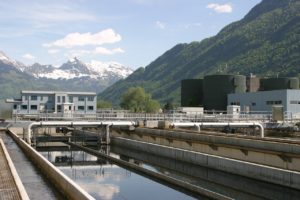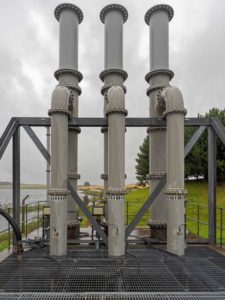An electromagnetic flowmeter also called a mag-flow meter, is widely used for water and wastewater applications. Your fluid must exert a low-pressure drop and the appropriate needed liquid conductivity to use the instrument. It’s a durable device that is easy to maintain
Mag-flow meters evolve with the current trends of technology of both sensors and electronics. The device size induces the ability to achieve quality performance and stable design operation of the volumetric meter.
The looming embracing of smart technology came with enhanced access, efficient information transfer, and shortly, digital displays will be attached to the electronic flow meters for water and wastewater.

The electromagnetic meter is flanged and accessible with an option of liner and electrode material.
Mag flow meter is free of obstruction from the pipes, thereby increasing the scope of fluid types that you can measure for its volumetric flow.
As a result, there is an extensive industrial application of this device. With such diverse applications, the industrial market is projected to increase in the coming years rapidly.
Industrial Applications
As to the electromagnetic meter structure and operational performance, applications’ choice has become vast, with industrial use of water and wastewater treatment.
The rapid growth of technology in water and wastewater management plants has issued a surge to these meters’ control systems.
Also, chemical firms, paper industries, and plants dealing with food and drinks are examples of other industrial sectors; this smart gadget uses for the firms’ regulatory processes.
This is due to the industrial industry’s need to examine liquids’ flow with many solid wastes.
Water treatment facilities should distribute quality, clean drinking water. The operation process involves a wide range of flow measurement tasks. The electromagnetic meter is an accurate and reliable tool to use.
How to Power Electromagnetic Flow Meters
Energy sources invented for the device is another central growth space for the player in the flow meter market. Currently, these meters have conventional wiring or power modules.
With the rise of renewable sources of energy and the growth of effective batteries, flow meters operating with batteries are increasingly adopting many industrial applications.
Industries are turning to give focus on the innovation of solar-powered mag flow meters. Each solar-powered device backed with a battery transmitter is fit for isolated areas without the electric field source.
Solar energy is ideal for display and returns the flow measurements of the remote location.
Electromagnetic Flow Meter Maintenance
Once they are installed, sensors are mounted on the gadgets so that maintenance cost is minimal.
Thus, industries applying the flow meters in their water and wastewater control processes do not require to replace them again.
The electromagnetic flowmeter is estimated to have 30 years’ service life. The device demand has gone high due to its maintenance-free design.
However, factors like the placement of flow meters’ tamper with its performance. The fluid temperature and operating pressure will affect the reading of your meter.
When the instrument is used to examine the water and wastewater flow at different pressure and temperatures, the results will differ.

